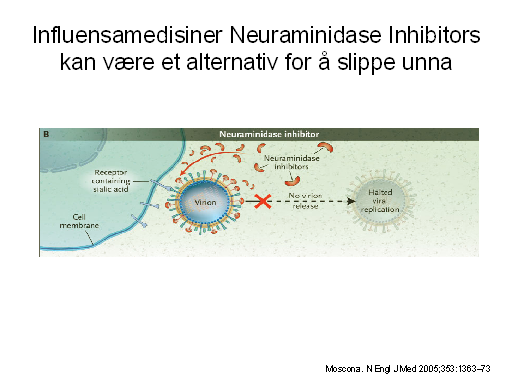

Neuraminidase, the target molecule of neuraminidase inhibitors, cleaves the cellular-receptor sialic acid residues to which the newly formed viral particles are attached.1 This cleavage releases viruses to invade new cells.1
Without neuraminidase, infection would be limited to one round of replications, rarely enough to cause disease.1
Blockage of the neuraminidase enzyme prevents virions from being released from the surface of infected cells.1
1. Moscona. N Engl J Med 2005;353:1363–73.